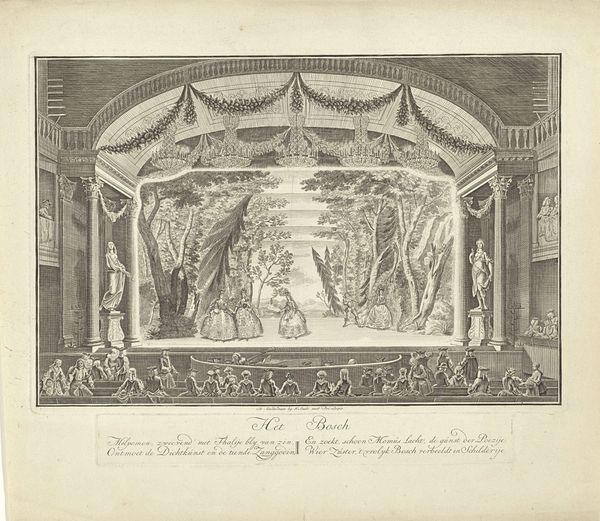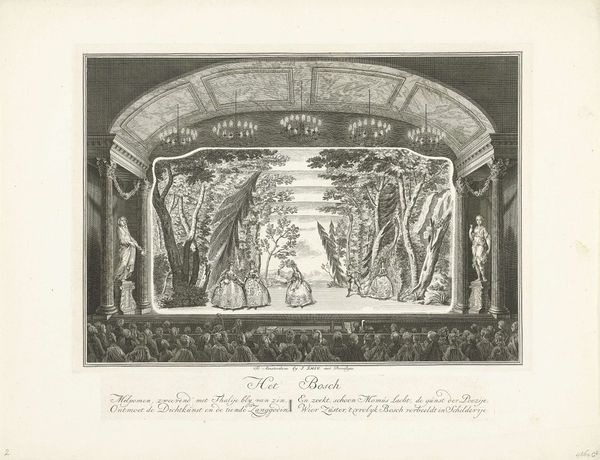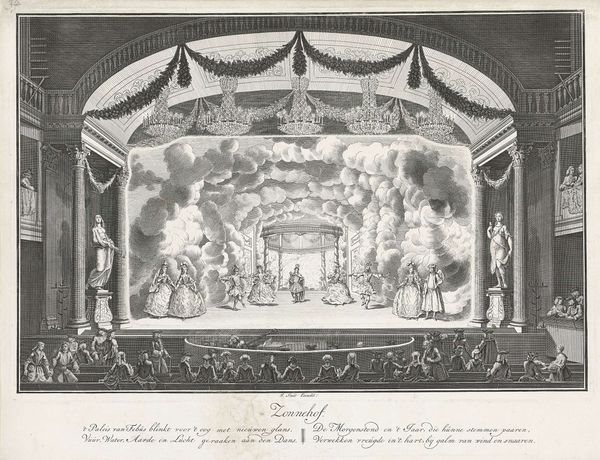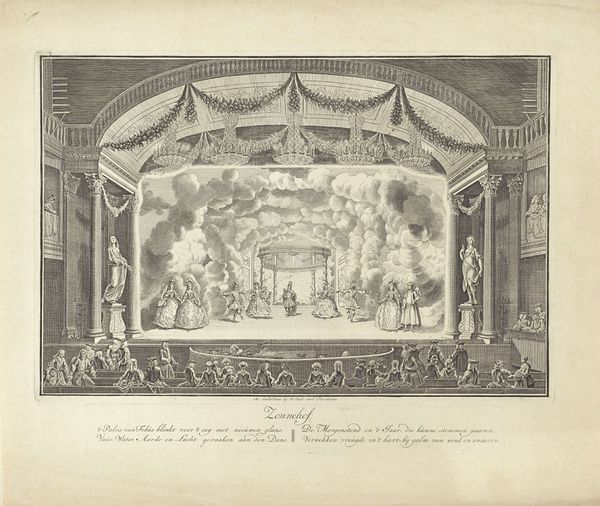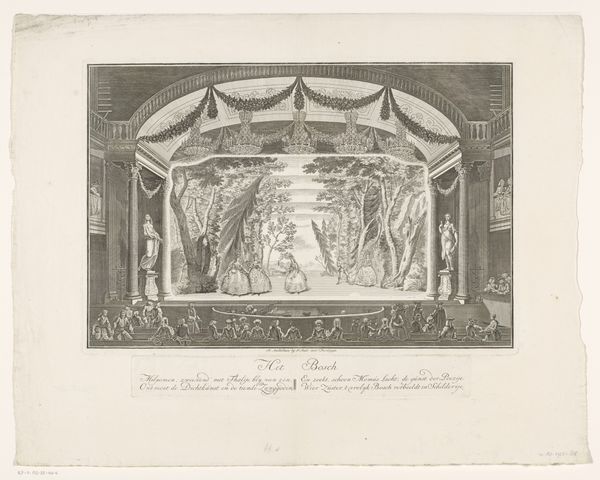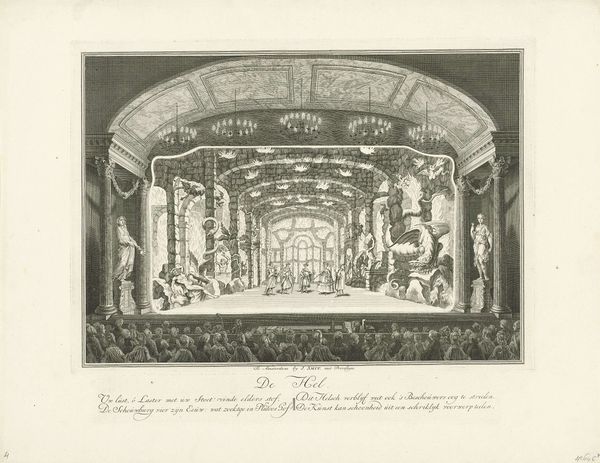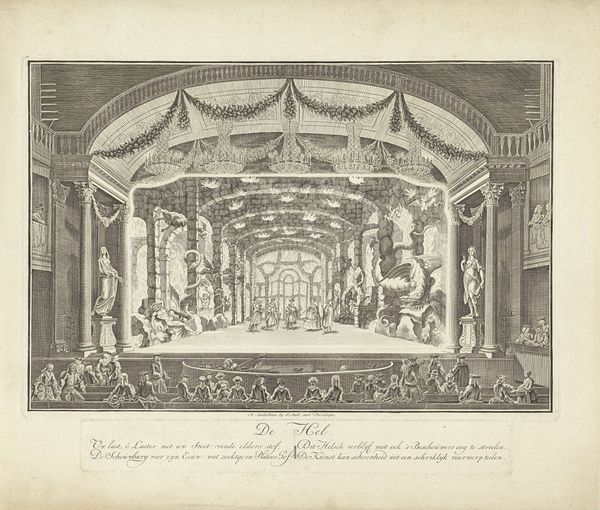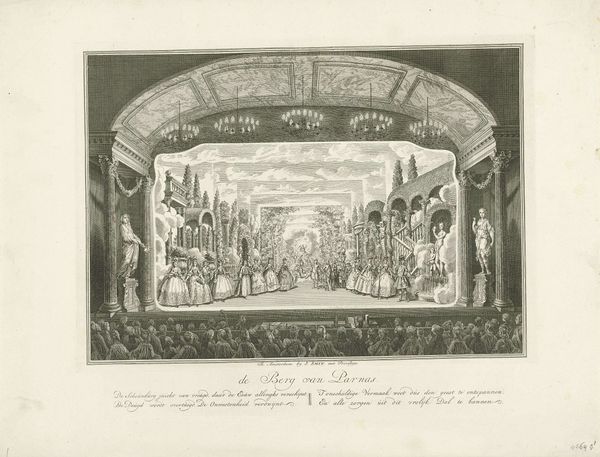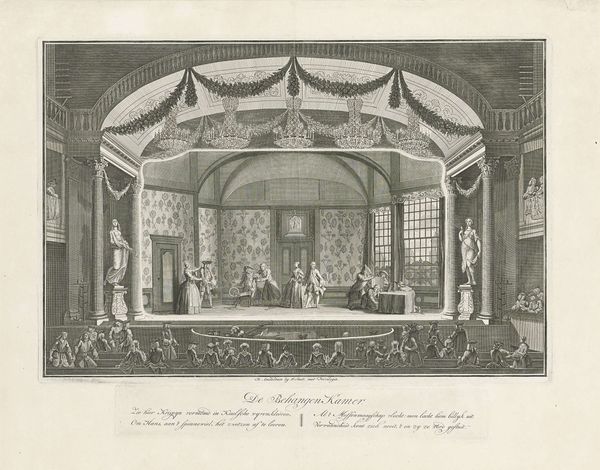
drawing, print, pen, engraving
#
drawing
#
baroque
# print
#
pen sketch
#
pencil sketch
#
old engraving style
#
landscape
#
pen-ink sketch
#
pen work
#
sketchbook drawing
#
pen
#
cityscape
#
history-painting
#
engraving
Dimensions: height 369 mm, width 470 mm
Copyright: Rijks Museum: Open Domain
Jan Punt made this engraving of a theater interior sometime in the 18th century. The printmaking process, specifically engraving, is itself a kind of theatrical performance. The artist carefully cuts lines into a metal plate, a painstaking process that requires both strength and precision. Look closely and you’ll notice the sharp, clean lines, which allow for detailed depictions of the chandeliers, costumes, and set design. This method of image production was critical to the development of print culture during the enlightenment. It allowed images to be widely disseminated at a low cost. Engravings like these played a crucial role in shaping public taste and understanding of visual culture. Consider the skilled labor involved in producing this print. An engraver such as Punt would have undergone extensive training to master the techniques and create such a detailed image. This print reminds us that images don't just appear, they are made by somebody. And that "somebody" invariably has a social and economic context that must be considered, alongside their aesthetic skill.
Comments
No comments
Be the first to comment and join the conversation on the ultimate creative platform.
